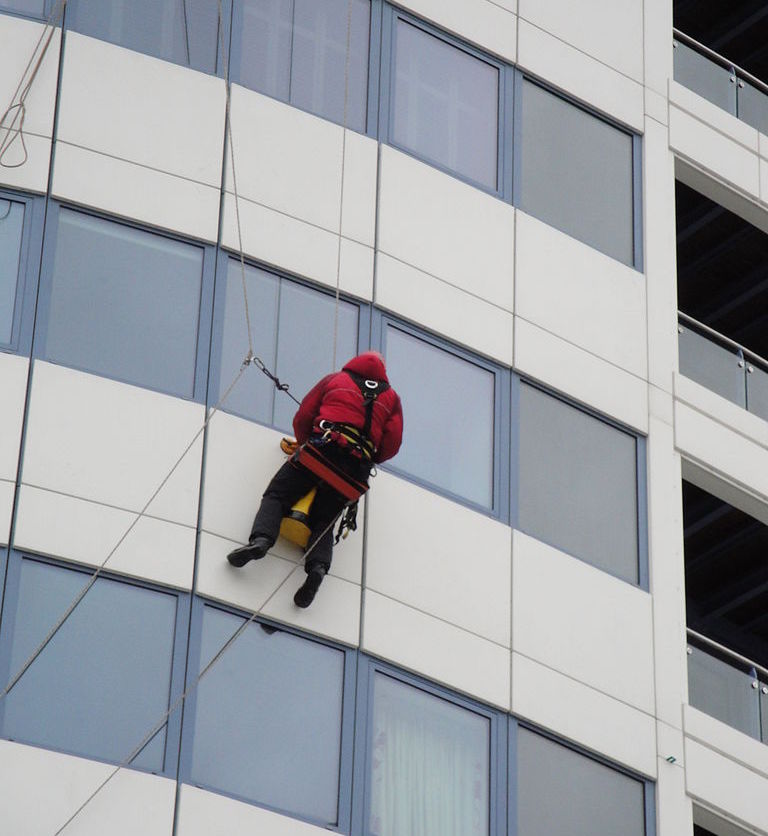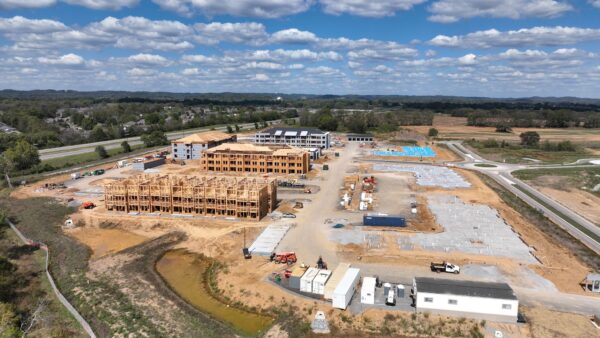Researchers at University College London (UCL) claim that a “revolutionary” new type of window could cut cleaning costs in tall buildings and reduce heating bills by up to 40% thanks to a new combination of nano-scale engineering inspired by the eyes of moths, and thermochromic coating.
The prototype, revealed today, has conical nanostructures engraved on its surface that trap air and prevent all but a tiny amount of water coming into actual contact with the glass. It means that rain hitting the glass turns into balls and roll right off, carrying dirt with them.
It’s currently estimated that, because of the obvious difficulties involved, the cost of cleaning a skyscraper’s windows in its first five years is the same as the original cost of installing them– UCL research leader Dr Ioannis Papakonstantinou
In normal glass raindrops cling and slide down more slowly, leaving a trail of residue.
The lead UCL researcher said this would be a big draw for high-rise building owners, since the cost of cleaning the windows surpasses the cost of installing them after the first five years.
The glass is also coated with a very thin (5-10 nanometre) film of vanadium dioxide which during cold periods keeps thermal radiation in and, during hot periods, keeps infrared radiation out. Vanadium dioxide is a cheap and abundant material, unlike silver- or gold-based coatings used by current energy-saving windows.
A third benefit, researchers say, is its ability to cut glare inside. The nano-scale “bumps” give the windows the same anti-reflective properties found in the eyes of moths and other creatures that have evolved to hide from predators.
It cuts the amount of light reflected into a room to less than 5%, researchers say, compared with the 20-30% achieved by other prototype vanadium dioxide coated windows.

Worker in safety harness cleans windows on a tower in Portsmouth, UK (Editor5807/Wikimedia Commons)
UCL research leader Dr Ioannis Papakonstantinou said this was the first time a nanostructure has been combined with a thermochromic coating.
“The bio-inspired nanostructure amplifies the thermochromics properties of the coating and the net result is a self-cleaning, highly performing smart window,” he said.
The UCL team calculate that the windows could cut heating bills by up to 40%, with the precise amount depending on the latitude of the building. High-rise office buildings would be particularly well suited, they say.
“It’s currently estimated that, because of the obvious difficulties involved, the cost of cleaning a skyscraper’s windows in its first five years is the same as the original cost of installing them,” said Papakonstantinou.
The UCL team calculate that the windows could cut heating bills by up to 40%, with the precise amount depending on the latitude of the building–
“Our glass could drastically cut this expenditure, quite apart from the appeal of lower energy bills and improved occupant productivity thanks to less glare. As the trend in architecture continues towards the inclusion of more glass, it’s vital that windows are as low-maintenance as possible.”
Discussions are now under way with UK glass manufacturers to commercialise the prototype.
The challenge is to scale up both the nano-manufacturing methods that the UCL team have specially developed, and the vanadium dioxide coating process.
If industrial players get involved, these new windows could hit the market in three to five years, says UCL.
The prototype was developed with support from the UK’s Engineering and Physical Sciences Research Council.
Top photograph: This electron miscroscope photograph shows the conical nanostructures engraved onto the glass. At 200nm they are 100 times smaller than a human hair. Controlling the surface morphology at nanoscale allows scientists us to tailor how the glass interacts with liquids and light with high precision (UCL)
Comments
Comments are closed.







Is this technology market ready
Building owners/occupiers must still clean applied coatings like polyester powder to window frames and cladding alongside. In fact, cleaning is needed to maintain the coating warranties. So, it’s difficult to see how building owners and occupiers can save on cleaning costs unless some form of extra protection is found for the architectural metalwork on facades also.